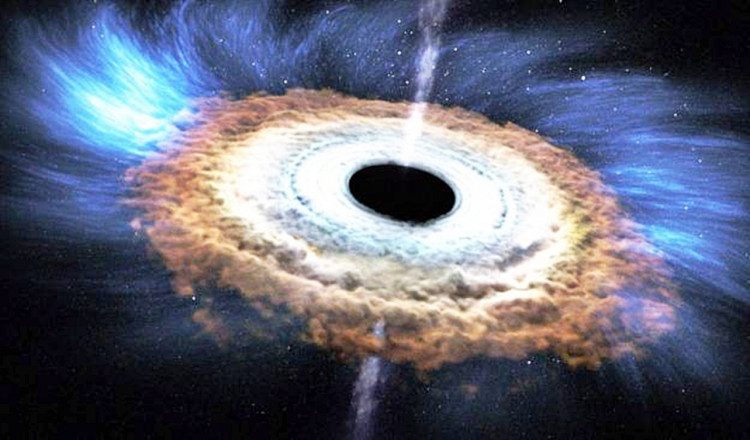The first photos of an actual black hole -- likely the one at the center of our Milky Way galaxy called "Sagittarius A* (pronounced A star) -- will be revealed on Wednesday by the European Southern Observatory (ESO) at six simultaneous press conference worldwide.
The European Space Agency said the photos will be of Sagittarius A*, the supermassive black hole that's at the center of our Milky Way galaxy.
The huge hype surrounding this historic event illustrates the magnificence of this occasion. Never before have we taken a photo of a black hole, which we now realize are responsible for the order existing in the Universe.
The photos to be revealed were taken by the Event Horizon Telescope (EHT), which was designed precisely for this purpose. EHT is a large telescope array consisting of a global network of radio telescopes and combining data from several very-long-baseline interferometry (VLBI) stations around the world.
The aim of EHT s to observe the immediate environment of Sagittarius A* at the center of the Milky Way some 26,000 light-years, as well as the even larger black hole in the supergiant elliptical galaxy Messier 87, with angular resolution comparable to the black hole's event horizon.
"Instead of constructing a giant telescope -- which would collapse under its own weight -- we combined several observatories as if they were fragments of a giant mirror," said Michael Bremer, an astronomer at the Institute for Millimetric Radio Astronomy in Grenoble.
In April 2017, eight radio telescopes in Hawaii, Arizona, Spain, Mexico, Chile, and the South Pole were trained on two black holes in very different corners of the Universe to collect data.
Sagittarius A* has four million times the mass of our Sun, which means that the black hole it generates is about 44 million kilometers across.
Astronomers said taking photos of Sagittarius A* from the Earth is like trying to photograph a golf ball on the Moon.
"The imaging algorithms we developed fill the gaps of data we are missing in order to reconstruct a picture of a black hole," said the team on their website.
The other candidate is a supermassive black hole 1,500 times more massive than Sagittarius A* in an elliptical galaxy known as M87. This monster is a lot farther from Earth, but distance and size balance out, making it easier to spot than Sagittarius A*.
One reason M87 might be the black hole to be revealed Wednesday is light smog obscuring Sagittarius A*.






